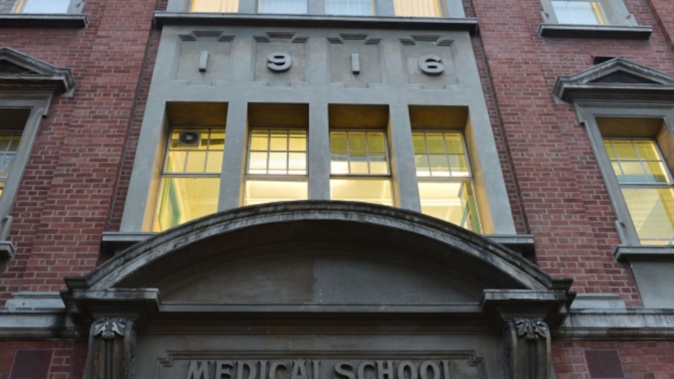
- Schemes designed to lift the University of Otago’s enrolment of under-served groups having some success with Māori, Pacific and rural students
- However, they have failed to increase student numbers from poorer communities and schools
- Government is reviewing the programmes, which the Act Party say are discriminatory
Affirmative action programmes at the University of Otago have significantly lifted Māori, Pacific and rural enrolments over the last 30 years but have failed to increase student numbers from poorer backgrounds.
Māori made up 20% of enrolments at the university’s medical school over the last four years, reaching parity with European and Asian enrolments for the first time.
However, the health profession courses at Otago were still dominated by students from wealthy backgrounds and top schools, despite growing efforts to recruit more people from disadvantaged communities.
The analysis of 30 years of the university’s enrolments by a group of researchers at Otago, published today in the New Zealand Medical Journal, comes as the Government reviews affirmative action programmes.
The University of Otago has had some form of affirmative action in place since the 1950s. Its current policy, Te Kauae Parāoa, covers eight health professional courses and aims to facilitate enrolments among Māori, indigenous Pacific, rural, refugee or students from lower socio-economic households.
Analysis of all enrolments between 1994 and 2023 found that Māori and Pacific rates in all health professional courses rose over this period, but were not yet in line with other ethnic groups. The exception was in the Bachelor of Medicine and Bachelor of Surgery course where rates had risen to 20.1%.
Professor Peter Crampton, a public health specialist at Otago, said those were positive trends but there was still significant work to be done.
Māori representation in the workforce was still relatively low – around 4.7% of all doctors.
Women now made up nearly two-thirds of all enrolments in health professional programmes, up slightly from 1994.
“I think that the gender balance in tertiary education is worth thinking very carefully about,” said Crampton. “Because at what point do we as a society become concerned by the relative under-representation of young men in tertiary education?”
Over the last 30 years, there had been no shift in the rate of students from the lowest decile schools (8.5%) or the areas with the highest deprivation levels (1.8%).
“That also gives pause for reflection,” Crampton said. “Structures of opportunity are heavily stratified in our society and that, from my point of view, is alarming and a matter of concern.”
Crampton said there had been relatively little deliberate effort made to attract students from poorer backgrounds. It required engaging with students early in their schooling and supporting them through to the completion of their degree, he said.
The NZMJ study noted that recent policy changes had been made at Otago to target more disadvantaged students but it was too early to measure their impact.
Pro-Vice-Chancellor of the Division of Health Sciences, Associate Professor Megan Gibbons, said significant progress had been made in increasing the diversity of the health professional student cohort.
“Success will be when the health workforce is representative of the population and we are just one part of the education system that is trying to ensure equity in outcomes,” she said.
Gibbons said it was challenging to increase the diversity of socio-economic backgrounds for a range of reasons, including that far fewer students from lower decile schools gained university entrance. She cited other barriers, including the disproportionate impact of the Covid-19 pandemic and economic conditions on school performance among people from lower socio-economic backgrounds.
The university had doubled the number of entrance scholarships for people in these groups, she said, and would increase the number and value of the scholarships again in 2025.
The coalition Government is “examining” programmes such as Te Kauae Parāoa and Auckland’s Māori and Pacific Admissions Scheme (MAPAS). Act Party leader David Seymour has said that he opposed them because they were racial discrimination.
 Act Party leader David Seymour says the policies at Otago and Auckland were racial discrimination. Photo / Alyse Wright
Act Party leader David Seymour says the policies at Otago and Auckland were racial discrimination. Photo / Alyse Wright
The authors of the study reiterated the benefits of the affirmative action programmes.
Crampton said that the policies had been very effective at lifting participation of rural students, who faced similar structural barriers to Māori and Pacific students.
The study’s authors listed other benefits, including the correcting of historical injustices; having health professionals from similar backgrounds to the patient have been shown to help with their patient-doctor relationship; and doctors from underserved communities were more likely to return to serve those communities.
Isaac Davison is an Auckland-based reporter who covers health issues. He joined the Herald in 2008 and has previously covered the environment, politics, and social issues.
Take your Radio, Podcasts and Music with you









